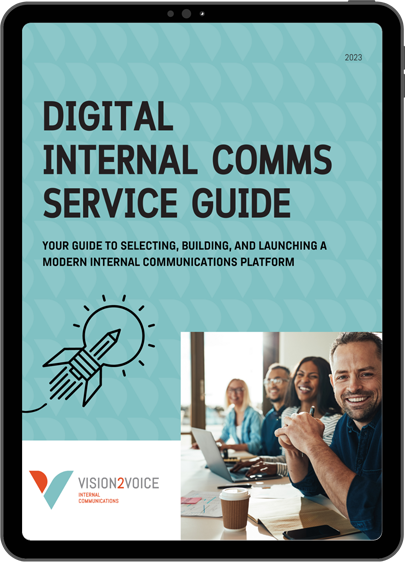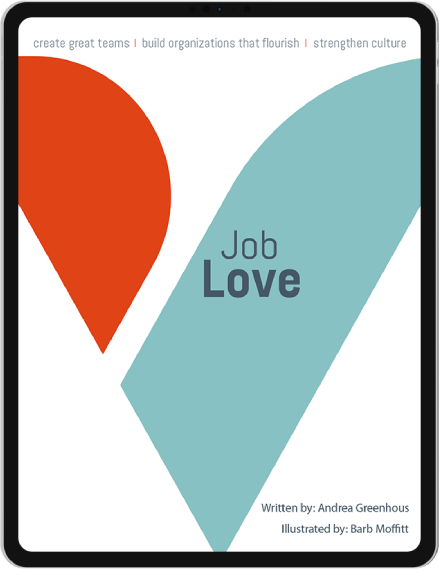We spend much of our lives at work and for years work was a place where showing emotion was frowned upon, sharing personal issues was taboo (I’ve got mental health issues was a phrase never uttered), and making a mistake could easily be career limiting. The notion that we need some kind of professional mask that hides our personal needs, personal lives, our imperfections, and our shortcomings must become a thing of the past. We need to make work more human.
Internal communication often plays a hidden role in reinforcing a less than a human workplace. We’ve seen it manifested in:
- Stories that focus on good news and success and ignores the failures
- Language that is robotic and riddled with jargon
- Communication materials that are overly polished to the point that they are devoid of meaning
- Censored listening and feedback channels that are ‘curated’
- Blaming, perfecting, and pretending that what we do doesn’t have an impact on people
Communication that isn’t human encourages us to put on armour, it makes us feel shame and it discourages psychological safety and curiosity. It hurts performance because people are held back from realizing their full potential. Finally, it prevents inclusion and belonging by discouraging people from bringing their whole self to work.
It’s Time to Re-write the Rule Book
When the pandemic hit, we were quite literally thrust inside the homes of our co-workers through Zoom or Teams. All of the sudden, we were getting a glimpse of their lives that we hadn’t seen at work, we met their pets, their children, and spouses. We learned more about where and how they lived, including getting a glimpse of their décor choices. Through this experience, we were able to see the more human side of our co-workers.
Right now we have a once-in-a-lifetime opportunity to take this lesson from the pandemic and use it to transform the employee experience and make it more human. A good place to start is by re-writing the rulebook on internal communication.
Old rule: Everyone will eventually learn the acronyms and company jargon and lingo
New rule: Ban corporate-speak and talk human
This new rule should be easy enough to understand but much harder to put into practice. I’ve always advocated for human language versus corporate lingo but I didn’t realize how much it really mattered until someone told me, “Andrea, you are the only one I know who can turn corporate bullshit speak into something that is honest, open, and clear.”
As Brené Brown says, “clear is kind, unclear is unkind” and in internal communication, it also sets the wrong tone – an inhuman one. So, throw out the acronym cheat sheet, and refresh the tone and style of your internal communication.
Old rule: Communicate only the facts – it’s not the responsibility of internal communications to deal with emotion
New rule: Recognize that humans are emotional beings and communication will evoke emotion
All internal communication will evoke emotion, even if it is apathy or boredom (definitely emotions we don’t want to elicit). Understanding what kind of emotion your communication will trigger and being proactive and intentional is vital to a more human employee experience.
For example, communicating a change can trigger negative emotions such as fear, uncertainty, and trepidation. Your communication should acknowledge these emotions and demonstrate empathy while striving to turn those negative emotions into more positive feelings such as confidence, enthusiasm, and trust.
By naming and acknowledging emotions as a natural part of the employee experience, you enter brave new territory where employees begin to learn that showing emotion is not weakness but rather a demonstration of courage and a sign that we are all human. This vulnerability is the birthplace of innovation, creativity, and change.
Old rule: Communication is perfect and pretends that everything is perfect
New rule: Communication shows vulnerability, humility, and courage by not having all of the answers and by sharing stories of failure
Imperfection is part of the human condition — and yet it’s always been extremely difficult for anyone to admit weaknesses or errors – especially at work. It takes courage to be imperfect but that’s a challenge if you are surrounded by co-workers pretending to be perfect or communication that pretends that everything is.
We need to let go of the idea that we and our organizations are perfect. I’ve written about the dangers of supporting an internal narrative that only celebrates success before. Another way perfection can manifest itself is when there is an impulse to wait until everything is figured out before communicating. Internal communications professionals should know that it is better to communicate something rather than waiting for everything to be figured out.
Old rule: Our company purpose is something we communicate once a year
New rule: Every communication reinforces our purpose and connects it to what we do every day
One of the things defining qualities of humanity is the need for purpose. It gives us direction, it motivates us, and it inspires us to action. People are not robots – they need a reason to get out of bed in the morning and their passion is fueled when they can make a difference.
A more human approach to the employee experience puts purpose at the centre of all communication. It’s a shared purpose that helps build a community that works together towards a common goal. In the internal communication audits we conduct, we usually find that employees do not have clear sense of purpose or understand the direction the organization is heading.
Old rule: One way, ad hoc communication focused on news and events
New rule: Deep listening and creating connection and community through shared stories
Another important lesson we learned during the pandemic was the importance of connection and community. As organizations move forward to embrace flexible work arrangements including hybrid and remote work models, building the connective tissue and preserving organizational culture is top of mind for leaders and internal communications professionals.
When people don’t share the office space or even the same time zone, it can be hard to create and sustain the connections that are so important to helping people thrive. Studies have shown that while many teams have formed deeper connections, there is a larger divide between different groups and teams in organizations. The risk is that silos in organizations grow taller and harder to break down.
The role of communication in fostering connections has emerged as even more critical. One of the best ways to build connections is with storytelling. Done right, stories create shared meaning and connect us. During the Olympics, I’m reminded of how I achieved this with a story of a Canadian rower. I read in the local paper that an Olympic hopeful was ill with a rare form of cancer. I knew that the product my company produced would be the active ingredient in the treatment. A few months later, we reached out to her and asked her to speak at our town hall. What followed was truly remarkable – she shared her story of illness and recovery and over the next year our company shared in her journey to the Olympics where she won a silver medal. Her story helped bring our organization together in a way that was special, unique, and lasting.
A better employee experience starts with remembering that we are all human. It’s a lesson learned in the pandemic that we hope is never forgotten. The team at Vision2Voice knows this happens through intentional and strategic communication that throws out the old rules and uses new approaches to make work human.
If your organization is on a journey to support a human, whole-person approach, we can help. Contact us today.






